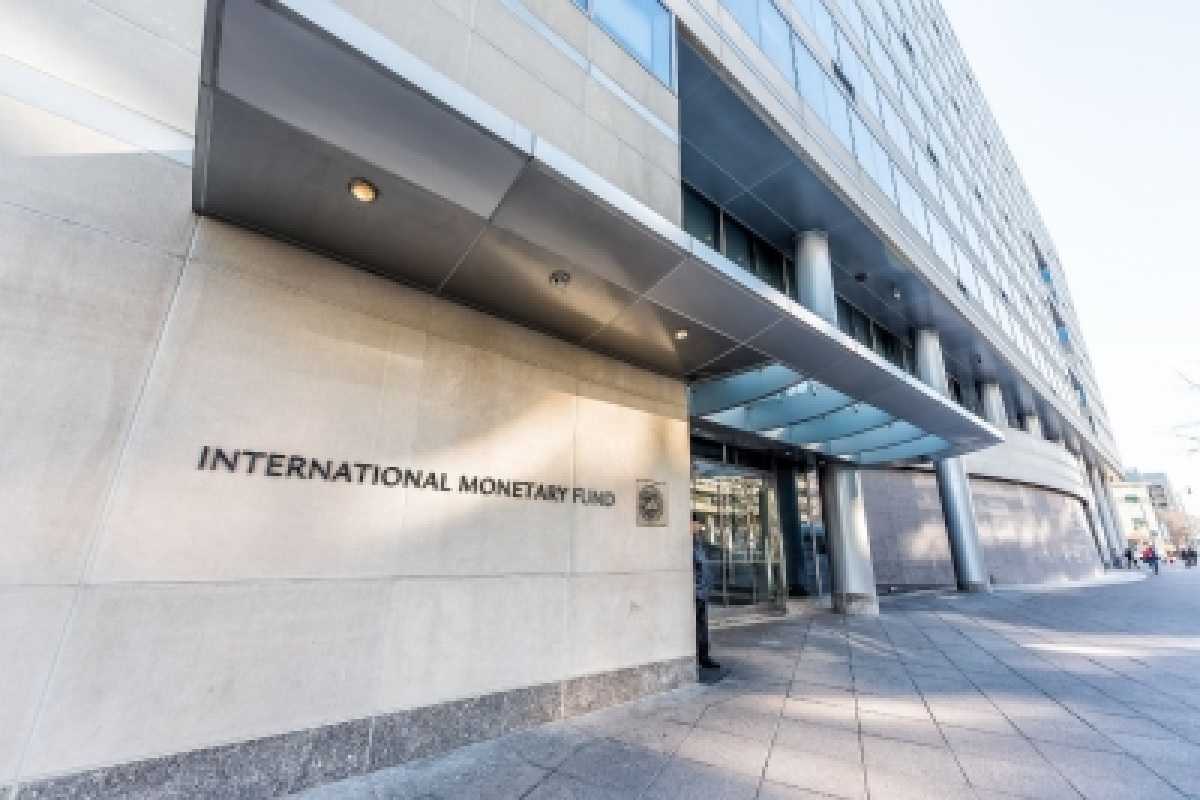Tone-deaf
India’s relationship with the International Monetary Fund has always been uneasy ~ marked by politeness in public, but suspicion and wariness in private.
The IMF cut US growth projection for this year by 1.2 per cent from the 5.2 per cent in the October WEO to 4 per cent.
IANS | United Nations | January 25, 2022 8:36 pm

Photo: IANS
India’s economy is projected to grow by 9 per cent in the next financial year (FY23), retaining its position as the fastest-growing major economy, the International Monetary Fund (IMF) reported on Tuesday citing its expectations of higher investments and consumption due to credit growth and better financial sector performance.
IMF’s World Economic Outlook (WEO) Update released in Washington said that India’s gross domestic product (GDP) is projected to again increase next fiscal by another 9 per cent, before moderating to 7.1 per cent in 2023-24.
Advertisement
The Update raised the growth projection for the current fiscal by 0.5 per cent from the 8.5 per cent projected in its WEO released in October last year.
Advertisement
“India’s prospects for 2023 are marked up on expected improvements to credit growth — and, subsequently, investment and consumption — building on better-than-anticipated performance of the financial sector,” the report said.
The upward revision is unrelated to the Covid-19 developments, it said.
India and Japan are the only major economies to have their growth projections raised from that made in October last.
Japan’s growth projection was increased by only 0.1 per cent from 3.2 per cent in October to 3.3 per cent.
Even though the report lowered India’s growth estimate for the current fiscal to 8.5 per cent from October’s 9 per cent, the country will still be the global growth leader.
This WEO Update is the last directly overseen by Gita Gopinath as the IMF’s economic counsellor and director of its research department.
She was promoted to the No. 2 spot at the IMF as its First Deputy Managing Director last week.
In a blog accompanying the Update, Gopinath sounded optimistic about the future with Covid variant Omicron’s effects likely receding in the second quarter of this year.
“The new variant appears to be associated with less severe illness than the Delta variant, and the record surge in infections is expected to decline relatively quickly, and the Omicron effect will fade starting in the second quarter,” she wrote.
Globally, the Update expected growth to moderate from 5.9 last year to 4.4 per cent this year, 0.5 per cent lower than the 4.9 per cent in the October WEO, and go down to 3.8 per cent next year.
“The global economy enters 2022 in a weaker position than previously expected,” the Update said.
While it said that a factor was the reimposed mobility restrictions in many countries as a result of Omicron, it blamed the higher broad-based inflation due to rising energy prices and supply disruptions and developments in the US and China, the world’s two largest economies, whose growth projections were cut.
“In case of the United States, this reflects lower prospects of legislating the Build Back Better fiscal package, an earlier withdrawal of extraordinary monetary accommodation, and continued supply disruptions. China’s downgrade reflects continued retrenchment of the real estate sector and a weaker-than-expected recovery in private consumption,” the IMF said.
The IMF cut US growth projection for this year by 1.2 per cent from the 5.2 per cent in the October WEO to 4 per cent.
China’s growth projection for this year was cut by 0.8 per cent – from 5.6 per cent in October – to 4.8 per cent.
While India’s projected growth at 9 per cent sounds impressive, in reality it will have to make up for the shrinkage of 7.3 per cent – a negative growth – it recorded in 2020-21.
The IMF prognostications for India’s growth are better than those made by the United Nations earlier this month.
The UN’s World Economic Situation and Prospects (WESP) report said that on a fiscal year basis, India’s economy shrank by 10.6 per cent in 2020-21.
It was projected to grow 8.4 per cent in the current fiscal, and moderate to 6.5 per cent in the next fiscal and to 5.9 per cent in 2023-24.
But in the UN’s projections also, India will be the fastest-growing major economy this year.
Advertisement
The Economic Survey 2024-25 said India’s GDP at constant prices grew by 6.7% and 5.4% in Q1 and Q2 FY25, respectively. This implied a real GDP growth of 6% in the first half of the current fiscal.
India's economy is projected to grow by 6.6 per cent in 2025, following an estimated expansion of 6.9 per cent in 2024, UN World Economic Situation and Prospects (WESP) 2025 report said.
Advertisement
